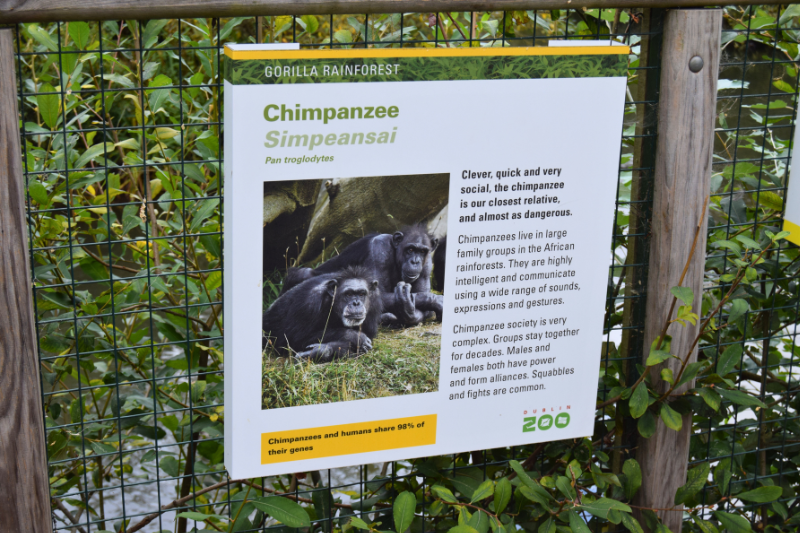Vogelsang's Sustainable Journey: Pioneering Eco-Friendly Practices

“Our roots are in agriculture. That’s why we’ve always had a very close relationship with nature and the responsible use of it.”
Hugo Vogelsang
Managing Director and Head of Research and Development
As sustainability gains traction, it's increasingly becoming a crucial aspect of our daily lives and a fundamental approach to managing businesses. Vogelsang was very early to recognise the need to act in an environmentally conscious and resource-saving manner and has always paid a great deal of attention to the issue. One of the core characteristics of the entire product range is that products are designed to be as energy-efficient as possible. There is a good reason why Vogelsang technology has successfully established itself as a more environmentally friendly alternative in many different areas. One of the shining lights in the product portfolio is slurry spreading using dribble bar and trailing shoe technology, in which the slurry is precisely deposited on the ground with low emissions and without damage.
In this interview, Hugo Vogelsang, Managing Director and Head of Research and Development, addresses
the issue of sustainability. It offers insight into Vogelsang's strategies for fostering sustainability within the company.
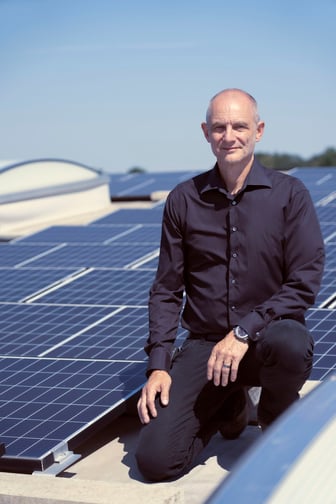 Mr. Vogelsang, what exactly does sustainability mean to Vogelsang?
Mr. Vogelsang, what exactly does sustainability mean to Vogelsang?
We associate sustainability with two factors: On the one hand, providing the necessary technology to ensure sustainable utilisation of resources such as slurry, and on the other hand developing products that consume minimal energy. Thus, it’s essential for us to design products for our customers that are as energy-efficient as possible, and to think about sustainability from the very beginning of product development. During every design process, we ask ourselves: How many kilowatt hours does the customer need for which job and how can we successfully incorporate the issue of energy efficiency right from the start of product development?
How important is sustainability at Vogelsang?
The issue has always been very important to us. This is because many of our products are used where sustainability and environmental protection play a major role. This includes agriculture, sustainable biogas utilisation and low-nitrogen spreading.
How is the sustainability concept reflected in production?
As far as possible, our goal is to produce without harming the environment and to consume as few resources as possible. While other companies boast heavy pumps, our goal is to keep pumps as light as
possible to save on cast iron. We source our cast parts (for the most part) in the region, not only because of the short transport distances but also because our excellent cooperation agreements mean that we can get very accurate cast parts that require only a small amount of added material.
This has two advantages: It saves on cast iron, and what isn’t there doesn’t require expensive and energy-intensive machining. Incorporating sustainability into production and designing our products to be energy efficient, while not always cheaper, is very important to us. 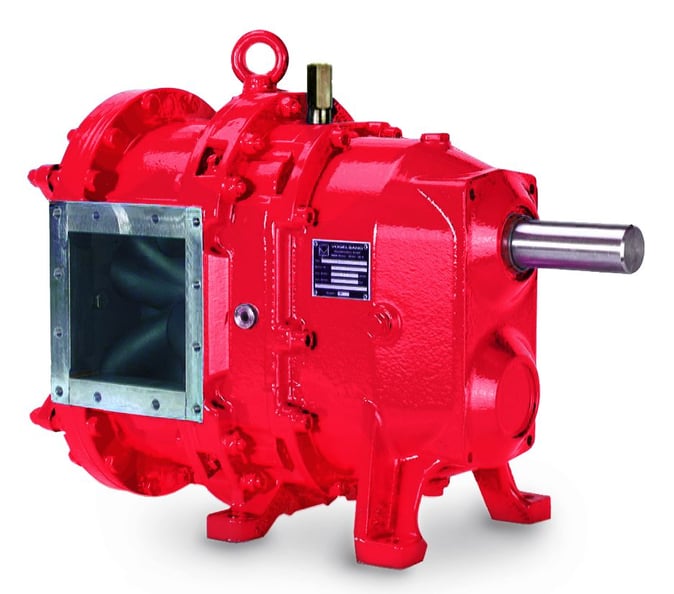 Strong in performance, light in weight: Vogelsang saves cast iron.
Strong in performance, light in weight: Vogelsang saves cast iron.
Which products from the portfolio particularly stand out in terms of sustainable technology?
We make a point of generally designing our products so that they are as energy-efficient as possible and so that they can be used sustainably. We don’t want to make cheap machines that consume a lot of energy. With our dribble bar technology, which we invented decades ago in conjunction with the Oldenburg Chamber of Agriculture, we were way ahead of our time in terms of energy efficiency and resource-saving utilisation of slurry. This is why dribble bar technology is a highlight in our product portfolio in terms of sustainability.
We also offer products for biogas plants that enable our customers to operate more energy efficiently. For example, plant operators can use mechanical disintegration with the DisRuptor or the RotaCut to achieve a higher gas yield even with structurally rich biomass and at the same time to reduce their power consumption.
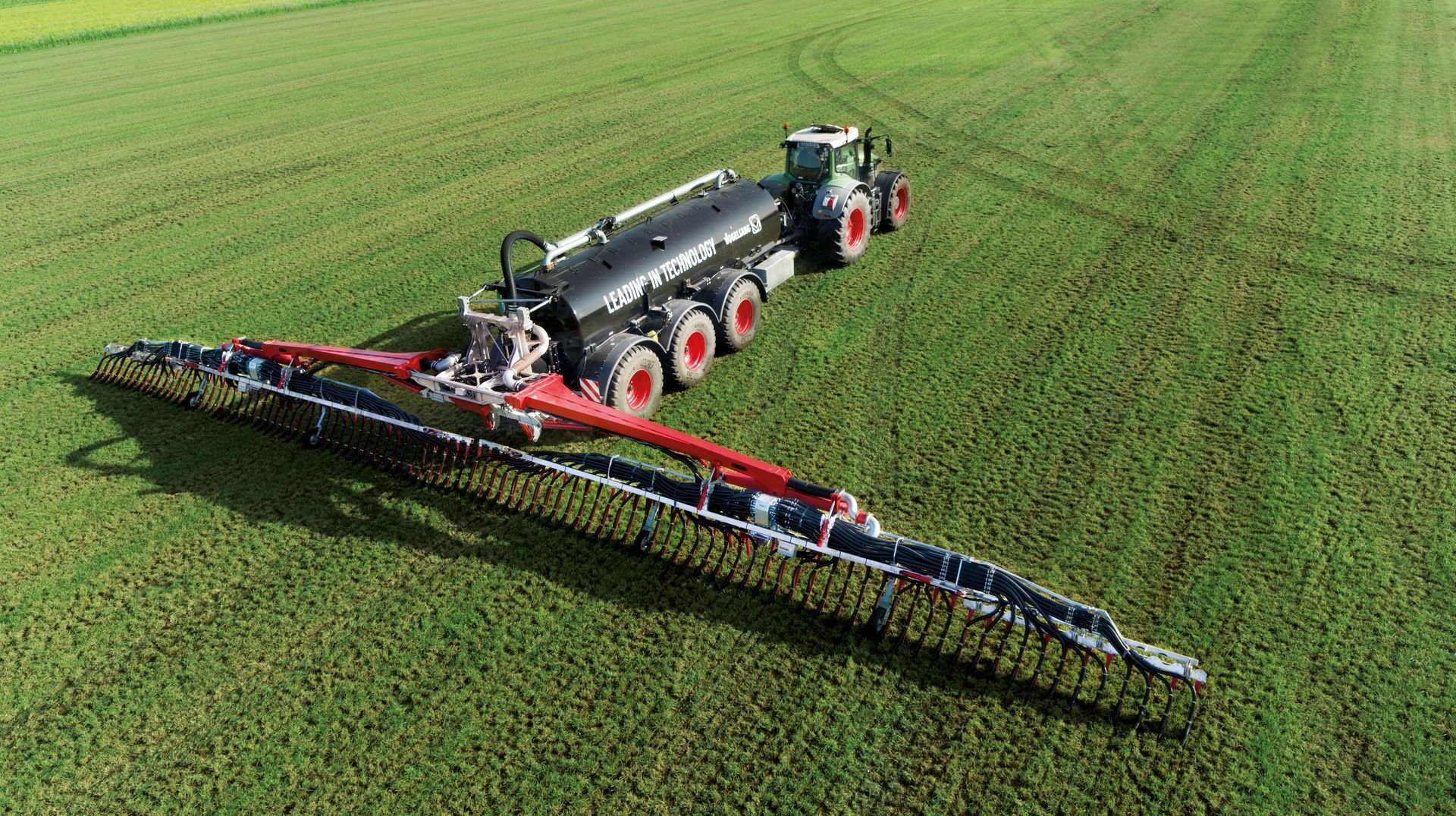 Gentle with the environment: with the dribble bar technology, liquid manure is spread in a resource-saving manner.
Gentle with the environment: with the dribble bar technology, liquid manure is spread in a resource-saving manner.
Green electricity made by Vogelsang
Vogelsang prioritises renewable energies, with the company generating its own electricity from sustainable sources. Since 2006, Vogelsang has operated a rooftop photovoltaic system generating up to one megawatt-hour of electricity daily. Recently, the company expanded with an additional 400-kilowatt peak system. Utilising turbines located at the site's perimeter, Vogelsang harnesses generated electricity. On sunny weekends, surplus electricity is seamlessly fed into the grid.
Hugo Vogelsang: “Saving and generating energy has always played a major role for us. We don’t search the grid for electricity from renewable sources, we produce green electricity ourselves. In 2021, we generated 10 – 15 percent of our own electricity needs – with the next planned system, we’ll get to over 20 percent.”
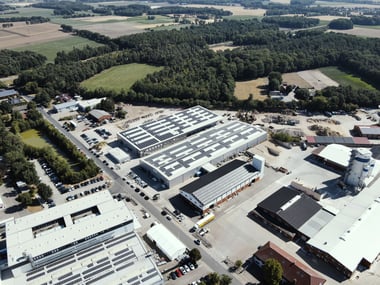
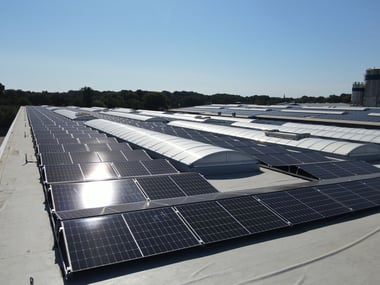 “Roof greening” in a different style: green electricity through photovoltaics on the roofs of Vogelsang.
“Roof greening” in a different style: green electricity through photovoltaics on the roofs of Vogelsang.
What measures does Vogelsang implement in the area of energy recovery?
Firstly, we are implementing what is seen as the standard for vacuum sanitation systems for buildings, for
example recovering energy in ventilation systems. We also have the opportunity to recover heating energy through our centralised building. Compressors are located in the same room as heaters, so we transfer the waste heat from the compressors to the heating water via heat exchangers. Another key measure that we
have been implementing since the early 2000s relates to our testing facility. Here, we operate an additional pump in the test circuit as a kind of water motor, which powers a generator. The energy is then fed back into the DUT drive. This saves around 50 percent of the energy. Especially with continuous testing, we can save on megawatt hours per year.
What role does sustainability play in your logistics operations?
Where the size of the parts allows, we use reusable transport packaging, for example, reusable euro pallets or skeleton boxes. We supply our dribble bar linkages in EasyPack format, preassembled on a transporting frame. There is a deposit on the frame, so it will be reused for the next EasyPack transport. If there is space in a part, we place another part inside it during transport – if suitable – to save on packaging material.
When we have goods traffic between individual branches, we also take care to avoid empty truck journeys. In general, we try to purchase our materials and parts within our region to reduce transport distance. In addition, we have almost 100 percent of our cast parts cast in Germany, which saves CO2 emissions for transport. We prioritise local partnerships, supporting nearby suppliers, hall builders, and electricians. This not only strengthens our community but also reduces our carbon footprint.
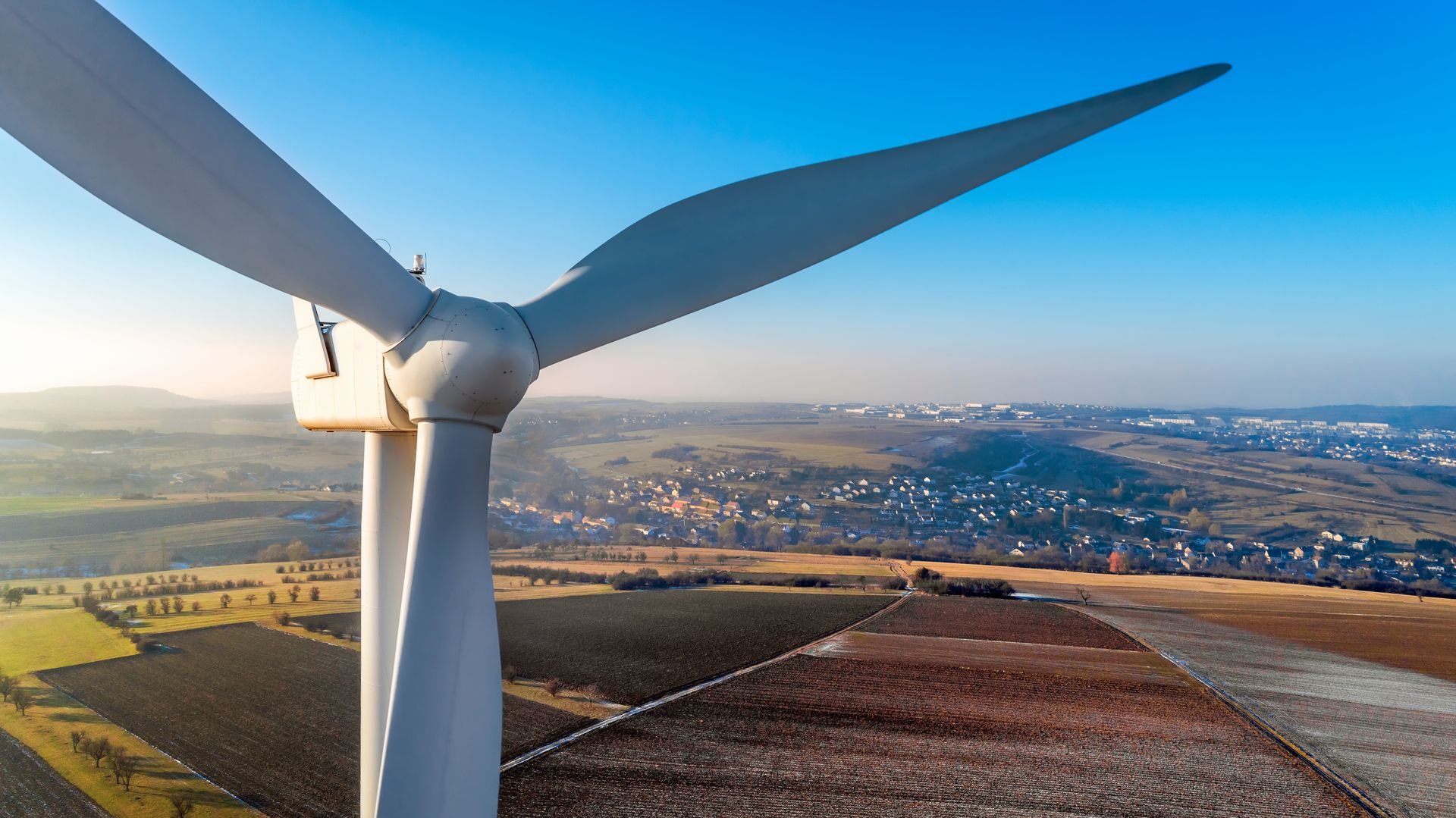 Wind power and geothermal energy are to supply energy in the future.
Wind power and geothermal energy are to supply energy in the future.
How does Vogelsang incorporate sustainability into everyday operations?
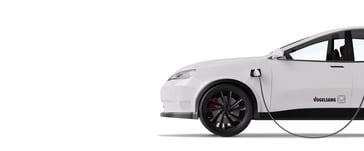 We are investing heavily in lighting, for example in motion detectors. So the light turns on automatically only when it is necessary. In addition, we are gradually replacing the fluorescent tubes with LEDs. We are also gradually converting our vehicle fleet to electric and hybrid cars. We have also done a lot in terms of our heating infrastructure. Specifically, we have centralised our supply of heating energy. Almost all halls are now supplied with thermal energy from one building. As a result, we have more efficient boiler use, especially in transitional periods, for example from summer to winter, which in turn saves gas.
We are investing heavily in lighting, for example in motion detectors. So the light turns on automatically only when it is necessary. In addition, we are gradually replacing the fluorescent tubes with LEDs. We are also gradually converting our vehicle fleet to electric and hybrid cars. We have also done a lot in terms of our heating infrastructure. Specifically, we have centralised our supply of heating energy. Almost all halls are now supplied with thermal energy from one building. As a result, we have more efficient boiler use, especially in transitional periods, for example from summer to winter, which in turn saves gas.
What does Vogelsang have planned for the future in terms of sustainability?
Currently, we are trying to source wind power within the range of a medium-voltage line. In addition, we are planning a large, centralised geothermal system that will enable us to replace over 80 percent of our gas use for heating with geothermal energy. This would enable us to supply all halls with heating energy, electricity or compressed air. We also want to achieve even higher self-consumption rates for solar power by using a battery storage system. It is also important to us to further establish sustainability in our corporate philosophy and to set it out in black and white.
A different kind of sustainability - from person to person
Vogelsang also demonstrates sustainability in its approach to human resources: Compared with other businesses in Germany, the company offers a large number of training opportunities, with not only apprentices but also engineers such as dual study programmes. Hugo Vogelsang remarks, "A family business embodies two key aspects: it's operated by a family, and many families work there. At Vogelsang, we have second and third-generation employees. Countless couples have met, married, and even started the next generation while working here. So, in many ways, we're a sustainable company.”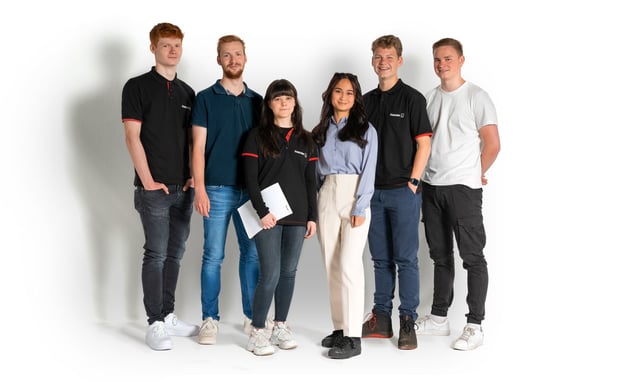
Further links

